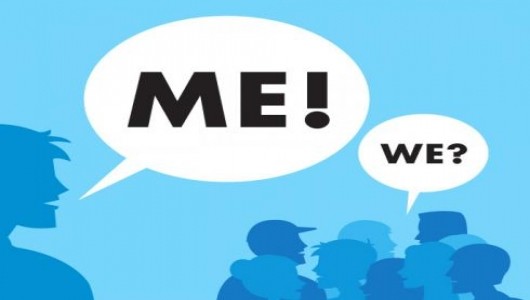Tuesday, 9 January 2024
Differences between individualist and collectivist cultures

This week I am going to very briefly summarize the profound differences between the individualist cultures of North America and the collectivist cultures of East Asia, as reported by Robert Sapolsky in his book Behave: The Biology Of Humans At Our Best and Worst.
The individualist cultures of North America place great stock in the rights and needs of individuals, self-fulfilment, uniqueness and autonomy, glorifying the iconic “self-made man”. In contrast, in the collectivist cultures of East Asia, the things that matter most are the needs of the group, interdependence, conformity and harmony. When someone from one of these individualist cultures introduces themselves, they might say something like, “I’m a teacher. I’m good at teaching math. I first got interested in math during the summer when I was 14.” Someone from a collectivist culture might instead say something like, “I’m the son of Hao. I was recruited as a teacher because I was an intern in Ms. Truong’s class, shortly before the summer when we became friends.”
These cultural values contribute so much to people’s identity that they have very different physiological effects, depending on the situation. In individualist cultures, when people are forced to talk about someone who has helped and influenced them, they secrete glucocorticoids, a type of hormone that helps them to deal with stress. In contrast, in collectivist cultures, people secrete glucocorticoids when forced to talk about the influence that they have had on someone else. Similarly, people from individualist cultures secrete more dopamine into the mesolimbic system associated with pleasure seeking when they see a face with an excited expression, whereas people from collectivist cultures do so when they see a calm face.
Even at the cognitive level, there are some notable differences in the ways that people from individualist and collectivist cultures reason. For example, when asked which two things “go together ” in a group composed of a monkey, a bear, and a banana, Westerners will tend to say “the monkey and the bear ”, seeing things in terms of categories, whereas East Asians will tend to say “the monkey and the banana ”, seeing things in terms of relationships. Also, when Westerners are shown a picture, they will spontaneously tend to look at the centre of it, and if they are forced to look at the image as a whole, their frontal cortex will work harder. Among people from collectivist cultures, it is the opposite: they will spontaneously tend to look at the picture as a whole, and it will take more effort for them to look at the centre only. And of course, biases in favour of the group are more present in collectivist societies than in individualist ones.
As Sapolsky reminds us, all of this is “on average ”, and within any one culture, there can be wide variations. Cultures are also dynamic, so they can change over time. The differences that we have been discussing are also closely linked with education and upbringing, so that, for example, people from Asian backgrounds will generally be more individualistic if they are born in North America than if they are are not.
That said, it has also been shown that the frequency of certain genes varies between cultures under the influence of the phenomenon of gene-culture coevolution. For example, the 7R allele of the gene for the dopamine receptor —associated with greater impulsiveness and novelty seeking — is more common in Europeans and in North Americans from European backgrounds than in East Asians. This allele would thus appear to be part of the genetic heritage of those individuals who participated in the great migrations over the course of human history.
From Thought to Language, How the Mind Develops | Comments Closed







